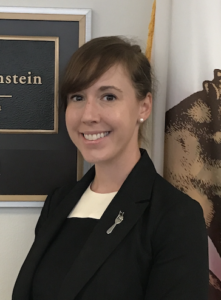Since 2001, when the current system of Medicare payments was initiated, consumer prices on just about everything—cars, homes, gas, airline tickets, clothing and food—have increased by approximately 75%. The cost of medical care has gone up even more, increasing 105% between 2001 and 2024.1 However, Medicare has failed to adjust reimbursement to keep physicians whole, resulting in unsustainable de facto cuts to physician reimbursement nearly every year.
The Medicare conversion factor (CF), one of the multipliers used to determine reimbursement of evaluation and management services relative value units (E/M RVUs), was $38.26 in 2001. If the conversion factor rose with inflation, the CF would be $67.39 in 2024. The actual conversion factor in 2024 is $32.74—even lower than it was in 2001.

Dr. Downey
Physician practices are expected to pay high wages to their support staff to keep pace with inflation, pay for hardware and software, and cover building rent, malpractice insurance, medical equipment, marketing, legal advice and more on five fewer dollars than in 2001, even though those dollars are worth 105% less. It’s no wonder physicians are opting out of owning and operating small businesses in favor of joining larger multi-specialty groups or selling their practices to hospital systems. Others are opting out of the Medicare payment system altogether, only accepting patients with private insurance or those willing and able to pay cash for services. When physicians shutter their practices, a ripple effect is felt throughout the local economy. In the U.S., physicians support the employment of 12.6 million Americans. Other businesses that rely on physician-owned practices get an economic boon, too, on the order of $3.2 million per physician and $2.3 trillion overall.2
Unsustainable Cuts
In addition to dwindling payments, the current Medicare reimbursement system is unstable. Physician business owners are never sure what their reimbursement rate will be from year to year. Physicians are forced to squeeze even more patients into their schedules every day to make up for new cuts, leaving both physicians and patients dissatisfied. Physician burnout is a threat to the sustainability of medical care for all Americans, and failing to be reimbursed for the cost of care is one significant stressor for physicians.3 This leaves groups like the ACR and the American Medical Association (AMA) rushing to plead for members of Congress to eliminate the cuts—or at least reduce them.
In past years, the ACR and the AMA have been successful in advocating for a reversal of the fee cuts, and in 2024, these groups are working diligently to reverse the 3.37% cut that took effect on Jan. 1. A failure to reverse the cuts will further threaten the continued viability of physician practices, with the most vulnerable Americans disproportionately affected: seniors, those with disabilities and those in rural or underserved areas with few options for medical care. Physicians find themselves at a breaking point, facing the third year in a row of Medicare payment cuts. Cuts in the past four years total a nearly 10% payment reduction, despite a Medicare Economic Index (MEI) of 3.8% last year and 4.6% this year, the highest level this century. These cuts have added to the pandemic-driven burnout and exodus from clinical medicine, adding salt to open wounds. Adding further insult to injury, every other sector in the healthcare industry is receiving an increase in Medicare payment this year, at the expense of physician payment.
The current path is not sustainable. Congress has the opportunity to throw our physician practices a lifeline by passing H.R. 6683, the Preserving Seniors’ Access to Physicians Act. This bipartisan effort, championed by Rep. Greg Murphy, MD (R-NC), would eliminate the full 3.37% Medicare physician payment cut that went into effect in 2024. The FY2024 National Defense Authorization Act (NDAA) included an extension of the Medicare sequester that added $2.2 billion to the Medicare Improvement Fund—more than enough to offset an elimination of the 3.37% physician payment cut without adding to the federal deficit. H.R. 6683 is a step in the right direction; however, reformation of the current system is needed for long-term sustainability and protection of patient access to care.
Call for Change
Adjusting for inflation, Medicare physician payments plunged 20% from 2001 to 2021. During the same time, the cost of operating a practice went up 39%. Structural changes are needed to reform the current reimbursement system that requires a balanced budget, a system that is crushing physicians and contributing to the growing medical workforce crisis.4 Some changes championed by the ACR are:
- Ending the budget neutrality requirement for the Medicare Physician Fee Schedule (MPFS);
- Adding a permanent, Medical Economic Index (MEI)-based inflationary update to the MPFS, as laid out in the Strengthening Medicare for Patients and Providers Act (H.R. 2474); and
- Ending the statutory freeze on Medicare physician fee payments related to inflation, currently scheduled through 2025. Under the current model, physician payments are subject to a six-year payment freeze that ends in 2026. When the freeze ends, the statutory update for most physicians will be limited to 0.25% indefinitely, well below even normal inflation rates.
Despite the challenges and seemingly uphill battle facing the sustainability of the Medicare payment system, there are wins worth celebrating. For calendar year 2024, the Centers for Medicare and Medicaid Services (CMS) finalized a new add-on code, G2211. This code is for outpatient office visits to acknowledge the complexity of ongoing care of a patient’s singular chronic or complex condition, such as systemic lupus erythematosus, systemic sclerosis, vasculitis, rheumatoid arthritis or inflammatory myositis.
The ACR strongly supported the creation of G2211 and led advocacy efforts for its implementation to reimburse cognitive specialists more adequately for the services they are already providing. This new code is billed as an add-on to office/outpatient evaluation and management (E/M) visits. For more information, see the ACR’s Guide to Understanding the New Medicare G2211 Code.
The ACR’s Government Affairs Committee has placed Medicare reimbursement as the single most important issue in rheumatology advocacy in the 2024 ACR policy priorities, with good reason. Falling reimbursement has many downstream effects that negatively impact practice sustainability, patient access to medical care, the growing workforce shortage and physician burnout. I personally invite every rheumatologist in the country to contact your legislators and share the impact diminishing reimbursement has had on your practice and your ability to care for your patients. Remember to renew your memberships to both the ACR and AMA to maximize your impact on policy that directly affects your ability to thrive in your professional life. Go to the ACR’s Legislative Action Center to share your story today.
Christina D. Downey, MD, is chair of the ACR’s Government Affairs Committee and an associate professor of rheumatology and division chief at Loma Linda University, Calif. The opinions expressed are her own and she does not speak on behalf of her employer.
References
- Official Data Foundation. CPI inflation calculator. 2024 Feb 13.
- American Medical Association. Physicians are more than healers—they support millions of jobs. 2018 Jan 8.
- Payerchin R. Physicians call on lawmakers to turn back the cut to Medicare reimbursement. Medical Economics. 2024 Feb 15.
- American Medical Association. AMA president sounds alarm on national physician shortage. 2023 Oct 25.
